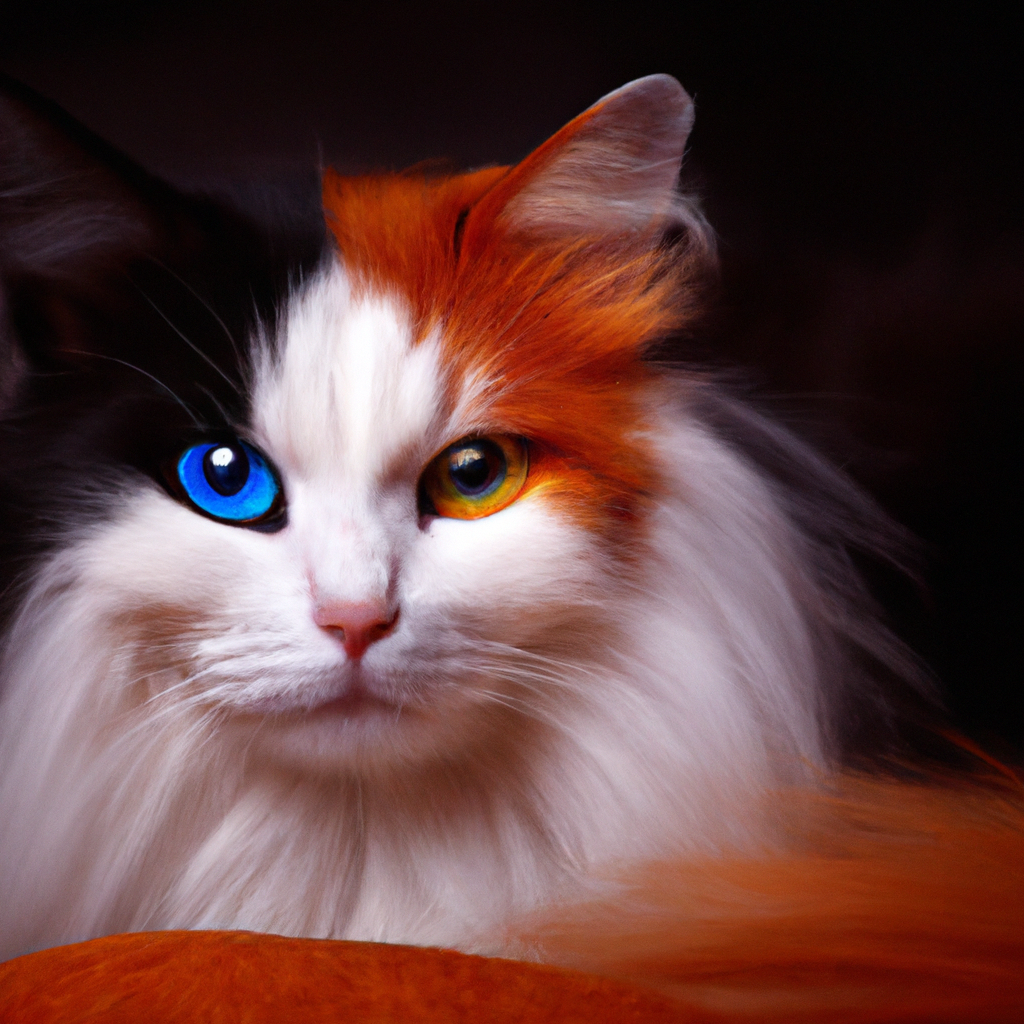Have you ever wondered if your furry feline friend can see the world in vibrant colors like we do? The question of whether cats can see color has long intrigued pet owners. In this article, we will explore the fascinating topic of feline vision, uncovering the scientific evidence behind their color perception. So, let’s delve into the world of cats and discover if they truly see the world in shades of gray or if there is more to their visual experience than meets the eye.


Can Cats See Color
Cats have long been a subject of curiosity when it comes to their visual abilities, particularly their perception of color. As a cat owner, you may have wondered if your furry companion sees the world in the same vibrant hues as you do. In this article, we will explore the fascinating topic of cats‘ color vision, shedding light on how these enigmatic creatures perceive the world around them.
How Cats Perceive Light
To understand how cats perceive color, it is essential to delve into how they perceive light in the first place. Like humans, cats have photoreceptive cells called photoreceptors in their eyes that enable them to detect and process light. However, there is a fundamental difference in the types of photoreceptors present in cats’ eyes compared to humans.
Rod Cells vs Cone Cells
In human eyes, there are two types of photoreceptor cells: rods and cones. Rod cells are responsible for detecting light and motion, while cone cells allow for color perception. Cats, on the other hand, have a higher ratio of rod cells to cone cells, which means their visual system is more attuned to detecting motion and seeing in low light conditions.
Cats’ Color Vision Compared to Humans
While cats do possess cone cells, their color vision is not as extensive as that of humans. Human beings have trichromatic vision, meaning they can differentiate between a wide spectrum of colors. Cats, on the other hand, only have dichromatic vision, which means they perceive a more limited range of colors compared to humans.


Colorblindness in Cats
Despite having some color vision, cats are considered to be partially colorblind. The most common form of colorblindness in cats is related to the red-green color spectrum. This means that cats struggle to distinguish between certain shades of red and green that may appear as variations of gray or blue to them instead.
Evolutionary Reasons for Cats’ Color Vision
The evolutionary reasons behind cats’ color vision can be traced back to their role as hunters and predators. Being able to detect the subtle differences in coloration of their prey or surroundings would have provided a significant advantage in survival. Additionally, the ability to see in low light conditions, thanks to their abundant rod cells, aids cats in their nocturnal hunting activities.
The Role of Pupil Shape in Cats’ Vision
Amidst discussions about cats’ color vision, the role of their distinctive slit-shaped pupils cannot be ignored. These unique pupils, which can dilate and constrict rapidly, serve several purposes. Slit pupils are believed to enhance depth perception, making it easier for cats to judge distances accurately. Furthermore, this pupil shape reduces the amount of glare in bright light, allowing cats to focus and maintain precision.
Cats’ Preference for Certain Colors
While cats may not see colors in the same way humans do, they do show preferences towards certain colors. Studies have indicated that cats are more attracted to shades of blue and violet, whereas red and green stimuli may not evoke the same response. This preference for specific colors raises intriguing questions about how cats perceive and interpret the world around them.
Impact of Color on Cats’ Behavior
Color can have a profound impact on behavior, and cats are no exception. Research has shown that color associations can influence cats’ emotional response to their environment. Certain colors may evoke positive emotions, while others could induce stress or anxiety. This knowledge can be useful when creating a calming and stimulating environment for our feline friends.
Training Cats to Recognize Colors
Cats undoubtedly have unique visual capabilities, but can they be trained to recognize colors? While it is challenging to ascertain the extent to which cats can distinguish colors, some studies suggest that with proper training methods, cats can indeed learn to associate specific colors with rewards or commands. Training cats to recognize colors adds an interesting dimension to the human-cat bond and may provide mental stimulation for our feline companions.
Practical Implications
Understanding cats’ color vision has practical implications for various aspects of our interactions with them. When choosing toys and enrichment items for cats, considering their color preferences may enhance their enjoyment and engagement. Moreover, designing cat-friendly environments that incorporate colors appealing to cats can create a more harmonious and enriching living space for both cats and their human companions. Additionally, in the medical field, color coding can be utilized to aid in the identification of cats’ medical conditions or to differentiate between individual cats.
In conclusion, while cats may not see the world in the same vibrant array of colors as humans do, their unique visual abilities and color preferences invite us to appreciate their perception of the world. Cats’ color vision, evolutionary adaptations, and the impact of color on their behavior all contribute to unraveling the mystery behind how these fascinating creatures see the world around them. So, the next time you gaze into your cat’s eyes, remember that their perception of color, although different from yours, is a captivating aspect of their sensory experience.

